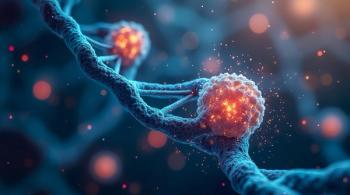
Despite Risk, Patients With SCD Hopeful About Gene Therapies
Sickle cell disease (SCD) has known complications that include organ damage and failure, rhabdomyolysis, glaucoma, splenic sequestration, and vaso-occlusive crises. At present, the only potential cure is a bone marrow transplant, but it can be difficult to find a donor and there is a high rejection risk.
Patients suffering with sickle cell disease (SCD) were highly acceptive of
Additional complications of sickle cell disease include rhabdomyolysis, glaucoma, and splenic sequestration.2,3 At present, the only potential cure is a bone marrow transplant, but it can be difficult to find a donor and there is a high rejection risk. In addition, minority populations, such as Black and African American individuals and Hispanic American patients have higher rates of SCD vs White individuals.4
“In recent decades, US survival rates for SCD patients have significantly risen, but the average life expectancy is about 60 years—substantially lower than that of the general population,” said Juan Marcos Gonzalez, PhD, lead study author,
A discrete-choice experiment survey was administered to 174 adult patients living with SCD and 109 parents of children living with the life-threatening condition. They were recruited through Duke University Health System, the University of North Carolina at Chapel Hill, Lurie Children’s Hospital of Chicago, and Cayenne Wellness in California. They were asked to respond to scenarios that paired hypothetical gene therapies and a no–gene therapy option, and the potential of therapies to eliminate SCD symptoms and increase life expectancy, risk of death, and risk of lifetime cancer risk. Group A comprised those with mild SCD symptoms (1 or fewer pain crises in the past year, no chronic pain, no stroke or acute chest syndrome [ACS]), and group B, patients with either 2 or more pain crises in the past year, chronic pain for at least 6 months, and stroke and/or ACS.
“Incorporating the patient experience into health care decision-making is increasingly valued,” the study authors wrote.
Overall, the study investigators determined that baseline SCD symptoms drove much of the patient and parent acceptance of gene therapy. In cases where a patient had milder SCD or a parent was caring for a child with a mild form of the disease, just knowing that health can deteriorate quickly from symptom exacerbation was linked to the participants reassessing their opinion of the benefit-risk profile of gene therapies for SCD; however, the lowest acceptable efficacy level for a gene therapy with a mortality risk fell by more than 50% when they were asked about scenarios of greater disease severity. This group was also more open to other treatment options.
Adult patients who responded to the survey vs the parents also demonstrated a want of higher treatment efficacy—for example, symptom elimination—for treatments that carried with them a mortality risk of 10% or more. Those with mild SCD symptoms preferred a gene therapy to have at least 67% efficacy in eliminating symptoms if there was a 10% mortality risk, while those with moderate symptoms were satisfied with 34% efficacy.
Within the adult patient population, the average age was 34 years, 73% were female patients, and 97% were Black or African American. Pediatric patients had an average age of 9 years, 47% were female patients, and the average parent age was 40 years. Continuous pain for at least 6 months was reported by 58% of the adult patients and 19% of the pediatric patients, and stroke by 4% and less than 1%, respectively.
The global burden of SCD is on the rise, the study authors noted, and approximately 100,000 individuals in the United States alone live with the rare blood disorder. Current approved standard-of-care treatments include hydroxyurea, voxelotor, L-glutamine, and crizanlizumab—but these only alleviate symptoms.
When choosing a gene therapy, higher chances of symptom elimination and longer life expectancy were the most important attributes the adult patients and parents. In contrast, gene therapies with a high risk of death were passed over.
“The decision to receive gene therapy is invariably a complex one and includes evidence that is evolving quickly, even from the time this survey was developed and administered,” the authors concluded. “Nonetheless, this study provides the first rigorous evaluation of the acceptable tradeoffs associated with gene therapy, forms a basis for evaluating gene therapies from the perspective of adult patients and caregivers of pediatric patients, and contributes to ongoing discussions about the acceptability of this novel technology.”
References
1. Sepulveda JMG, Yang JC, Reed SD, et al. Preferences for potential benefits and risks for gene therapy in the treatment of sickle cell disease. Blood Adv. Published online October 31, 2023. doi:10.1182/bloodadvances.2023009680
2. Sickle cell trait. American Society of Hematology. Accessed November 2, 2023.
3. Ochocinski D, Dalal M, Black LV, et al. Life-threatening infectious complications in sickle cell disease: a concise narrative review. Front Pediatr. 2020;8:38. doi:10.3389/fped.2020.00038
4. Individuals with severe sickle cell disease express high risk tolerance for gene therapies. News release. American Society of Hematology. October 31, 2023. Accessed November 2, 2023. https://www.hematology.org/newsroom/press-releases/2023/individuals-with-severe-sickle-cell-disease-express-high-risk-tolerance-for-gene-therapies
Newsletter
Stay ahead of policy, cost, and value—subscribe to AJMC for expert insights at the intersection of clinical care and health economics.














































